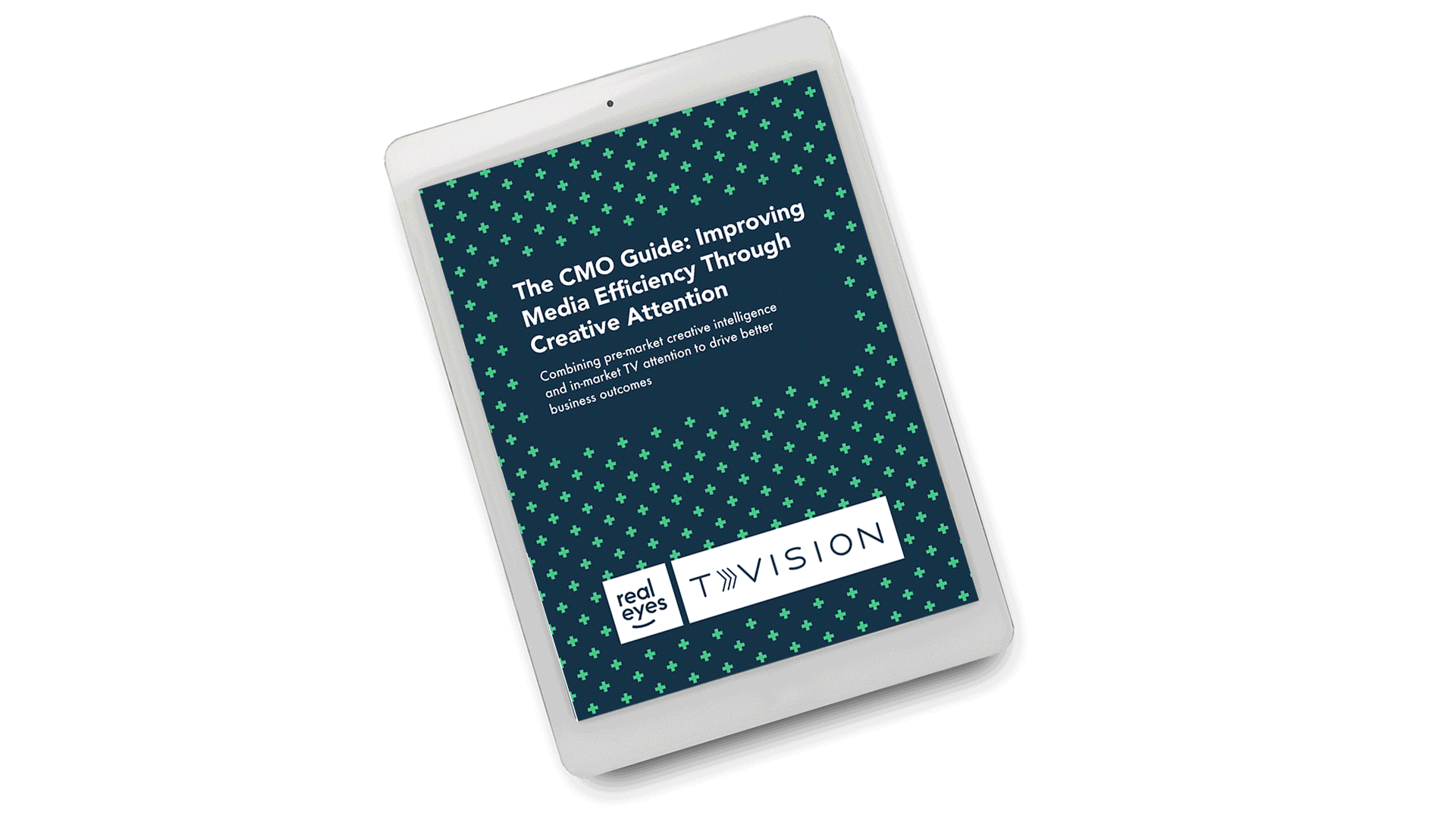
The CMO Guide: Improving Media Efficiency Through Creative Attention

Keith O'Brien
In a landmark study produced in tandem with TVision, we found a correlation between pre-campaign and in-market attention, along with other compelling best practices for how to maximize both low- and high-performing creative.

Read four takeaways and access the report below.
1. Not All Creative Benefits Equally from Premium Media Placements
While high-scoring creative performs well across most dayparts (even less expensive daytime hours), low-scoring creative has the best chance of success during premium dayparts. If pre-campaign testing reveals low-scoring creative, but marketers don’t have the luxury of editing or reinventing new creatives, they should consider weighting their media toward primetime dayparts to ensure their ad has the best opportunity to break through.
2. Low-Performing Creative Needs Repeat Exposures to “Wear In” and Show an Uplift in Impact
Attention scores for these ads can improve by as much as 5% as they are shown with increased frequency. If you’ve already invested in a low-scoring ad, don’t intentionally limit frequency. Instead, monitor in-market attention to give it time to wear in. It’s simple. Ads work best when people pay attention. If audiences aren’t engaged, then advertisers are already starting from behind. It’s why marketers test creative before they launch campaigns - it helps to gauge the potential impact of their ad, and ensure they’re putting their best foot forward.
3. High-Performing Creative Will Wear Out More Quickly
The attention boost marketers get from creative that scores well in pre-campaign
testing will fade as frequency is increased. This suggests that if marketers shouldn’t plan to rest for long on the laurels of great creative, and should check in on the performance of older ads if they’re scheduled to run within high-value media placements.
4. Ad Performance Varies Over Time and Across Media Placements
Metrics like the Realeyes Quality Score and TVision’s Creative Attention Score are guide posts, but ultimately creative performance is dependent on external factors. It is important to continually test and monitor ads to know the best placement strategies.
